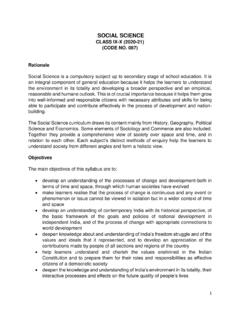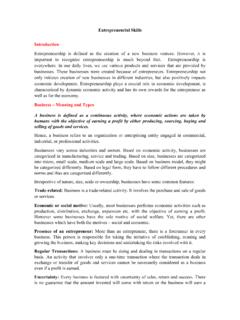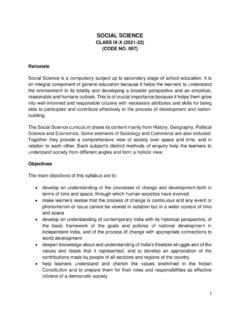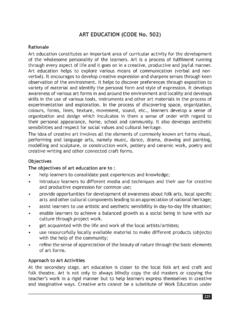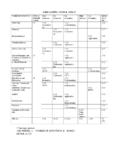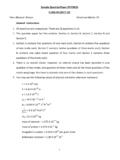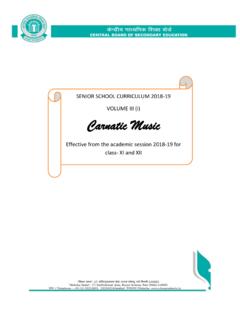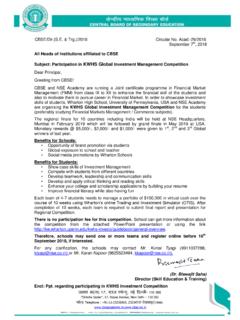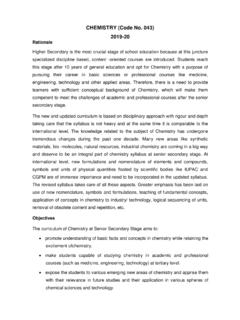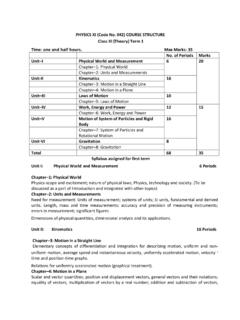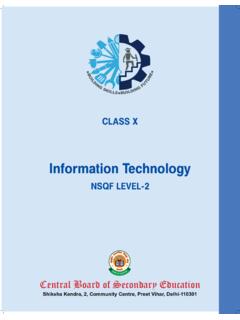Transcription of MATHEMATICS (IX-X) (CODE NO. 041) Session 2021-22 - CBSE
1 MATHEMATICS (IX-X) (CODE NO. 041) Session 2021-22 The Syllabus in the subject of MATHEMATICS has undergone changes from time to time in accordance with growth of the subject and emerging needs of the society. The present revised syllabus has been designed in accordance with National Curriculum Framework 2005 and as per guidelines given in the Focus Group on Teaching of MATHEMATICS which is to meet the emerging needs of all categories of students. For motivating the teacher to relate the topics to real life problems and other subject areas, greater emphasis has been laid on applications of various concepts.
2 The curriculum at Secondary stage primarily aims at enhancing the capacity of students to employ MATHEMATICS in solving day-to-day life problems and studying the subject as a separate discipline. It is expected that students should acquire the ability to solve problems using algebraic methods and apply the knowledge of simple trigonometry to solve problems of height and distances. Carrying out experiments with numbers and forms of geometry, framing hypothesis and verifying these with further observations form inherent part of MATHEMATICS learning at this stage.
3 The proposed curriculum includes the study of number system, algebra, geometry, trigonometry, mensuration, statistics, graphs and coordinate geometry, etc. The teaching of MATHEMATICS should be imparted through activities which may involve the use of concrete materials, models, patterns, charts, pictures, posters, games, puzzles and experiments. Objectives The broad objectives of teaching of MATHEMATICS at secondary stage are to help the learners to: consolidate the Mathematical knowledge and skills acquired at the upper primary stage; acquire knowledge and understanding, particularly by way of motivation and visualization, of basic concepts, terms, principles and symbols and underlying processes and skills; develop mastery of basic algebraic skills; develop drawing skills.
4 Feel the flow of reason while proving a result or solving a problem; apply the knowledge and skills acquired to solve problems and wherever possible, by more than one method; to develop ability to think, analyze and articulate logically; to develop awareness of the need for national integration, protection of environment, observance of small family norms, removal of social barriers, elimination of gender biases; to develop necessary skills to work with modern technological devices and mathematical software's.
5 To develop interest in MATHEMATICS as a problem-solving tool in various fields for its beautiful structures and patterns, etc. to develop reverence and respect towards great Mathematicians for their contributions to the field of MATHEMATICS ; to develop interest in the subject by participating in related competitions; to acquaint students with different aspects of MATHEMATICS used in daily life; to develop an interest in students to study MATHEMATICS as a discipline. COURSE STRUCTURE CLASS IX Units Unit Name Marks I NUMBER SYSTEMS 08 II ALGEBRA 17 III COORDINATE GEOMETRY 04 IV GEOMETRY 28 V MENSURATION 13 VI STATISTICS & PROBABILITY 10 Total 80 UNIT I: NUMBER SYSTEMS 1.
6 REAL NUMBERS (16 Periods) 1. Review of representation of natural numbers, integers, and rational numbers on the number line. Representation of terminating / non-terminating recurring decimals onthe number line through successive magnification. Rational numbers as recurring/ terminating decimals. Operations on real numbers. 2. Examples of non-recurring/non-terminating decimals. Existence of non-rational numbers (irrational numbers) such as, and their representation on the number line.
7 Explaining that every real number is represented by a unique point on the number line and conversely, viz. every point on the number line represents a unique real number. 3. Definition of nth root of a real number. 4. Rationalization (with precise meaning) of real numbers of the type and (and their combinations) where x and y are natural number and a and b are integers. 5. Recall of laws of exponents with integral powers. Rational exponents with positive real bases (to be done by particular cases, allowing learner to arrive at the general laws.)
8 UNIT II: ALGEBRA 1. POLYNOMIALS (23) Periods Definition of a polynomial in one variable, with examples and counter examples. Coefficients of a polynomial, terms of a polynomial and zero polynomial. Degree of a polynomial. Constant, linear, quadratic and cubic polynomials. Monomials, binomials, trinomials. Factors and multiples. Zeros of a polynomial. Motivate and State the Remainder Theorem with examples. Statement and proof of the Factor Theorem. Factorization of ax2 + bx + c, a 0 where a, b and c are real numbers, and of cubic polynomials using the Factor Theorem.
9 Recall of algebraic expressions and identities. Verification of identities: + and their use in factorization of polynomials. 2. LINEAR EQUATIONS IN TWO VARIABLES (14) Periods Recall of linear equations in one variable. Introduction to the equation in two variables. Focus on linear equations of the type ax+by+c=0. Explain that a linear equation in two variables has infinitely many solutions and justify their being written as ordered pairs of real numbers, plotting them and showing that they lie on a line.
10 Graph of linear equations in two variables. Examples, problems from real life, including problems on Ratio and Proportion and with algebraic and graphical solutions being done simultaneously. UNIT III: COORDINATE GEOMETRY COORDINATE GEOMETRY (6) Periods The Cartesian plane, coordinates of a point, names and terms associated with the coordinate plane, notations, plotting points in the plane. UNIT IV: GEOMETRY 1. INTRODUCTION TO EUCLID'S GEOMETRY (Not for assessment) (6) Periods History - Geometry in India and Euclid's geometry.
